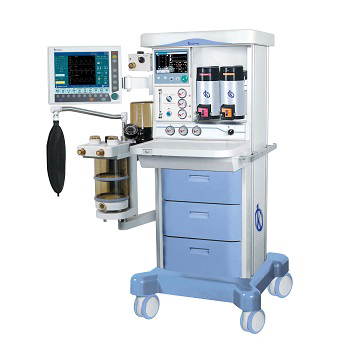Anesthesia is a medical fact based on drugs capable of blocking the tactile and painful sensitivity of a patient, whether in all or part of his body, with or without compromise of conscience. Anesthesia is defined by offering inertia, forgetfulness, muscle relief and disabling reflexes. It is applied through an anesthesiologist, who practices anesthesiology and resuscitation.
This sedative can be delivered by injection, inhalation, topical lotion, aerosol, eye drops or skin patch. Causing a loss of sensitivity or consciousness. Frequently, it is supplemented to control pain caused by sedation so that the patient remains semi-asleep and calm during any procedure.
Types of Anesthesia
The main function, is to maintain optimal, efficient balance of the organism. Through intervention, patients will cause functional changes, and through medical control, allows to correct in advance any incident that may occur.
For medicine, there are different types of anesthesia, being these able to block pain to the patient. There are three main types of anesthesia:
- Local anesthesia: It is responsible for eliminating the painful sensitivity of a small area of the body. It is very common for small sutures.
- Locoregional anesthesia: It tends to eliminate the sensitivity of a region and/or one or more body members.
- General anesthesia: It produces a state of unconsciousness by intravenous or inhalation administration of hypnotic drugs. It is done with the combination of several techniques, in what is called multimodal anesthesia. These are essential because they guarantee hypnosis, analgesia, amnesia, autonomic control and muscle relaxation.
The anesthesiologist, is the only one in charge of applying anesthesia in patients under surgery and controls vital signs and that oxygenation, body temperature, ventilation, etc., are adequate throughout the process.
Patient monitoring for the use of anesthesia
Through the provision of anesthesia, the intraoperative system is responsible for inducing it in its maintenance and awakening at the end of the intervention. In addition, the anesthesiologist is in charge of the control of the constants: continuous ECG (electrocardiogram), blood pressure, oxygen saturation (pulse oximetry) and capnography as standard monitoring. At the same time, urgent intraoperative examinations may be mandatory, especially in very aggressive surgeries.
Likewise, by means of intraoperative awakening, the patient’s condition is reflective of events that occurred during an intervention under general anesthesia, and he/she can remember them, that is, he/she can narrate those events after the procedure is finished. Also, it usually experiences auditory perceptions (visual are rare), feeling of paralysis and/or pain, causing in some cases distress, helplessness, helplessness or panic. In the medium term, it causes psychological/psychiatric disorders. Risk factors are related to the anesthetic technique and the type of surgical intervention in the patient.
During the post-operative process, it takes place, for a few hours, in a monitoring room known as the recovery room. For some patients, they need to be monitored intensively in the immediate postoperative period and are transferred to specialized intensive care wards, where many of them are run by anesthesiologists. The contiguous postoperative is the commitment of the medical team of recovery, especially of the anesthesiologist who receives the patient, which is assessed with scales of importance for decision making and the patient’s fate.
Anesthesia machines in Spain
We at Kalstein provide reliability and security, for the satisfaction of our customers, and therefore, we have the anesthesia machine able to provide anesthesia solution with electronic PEEP function, acquires automatic compensation of current volume. It provides a high precision output of only 20 ml. The anesthesia machine uses latex-free and autoclavable devices. It can be easily maintained and cleaned without specialized tools. It is CE certified, giving users peace of mind.
These YR series equipment can be used to administer inhalation anesthesia in adult, pediatric and neonatal patients. The expansion of the modern anesthesia workstation is also feasible to greatly improve the workflow and reduce operating costs.
We are manufacturers and we have the best advice to make your purchase the ideal, with excellent prices. For a better experience, visit our catalog at HERE

